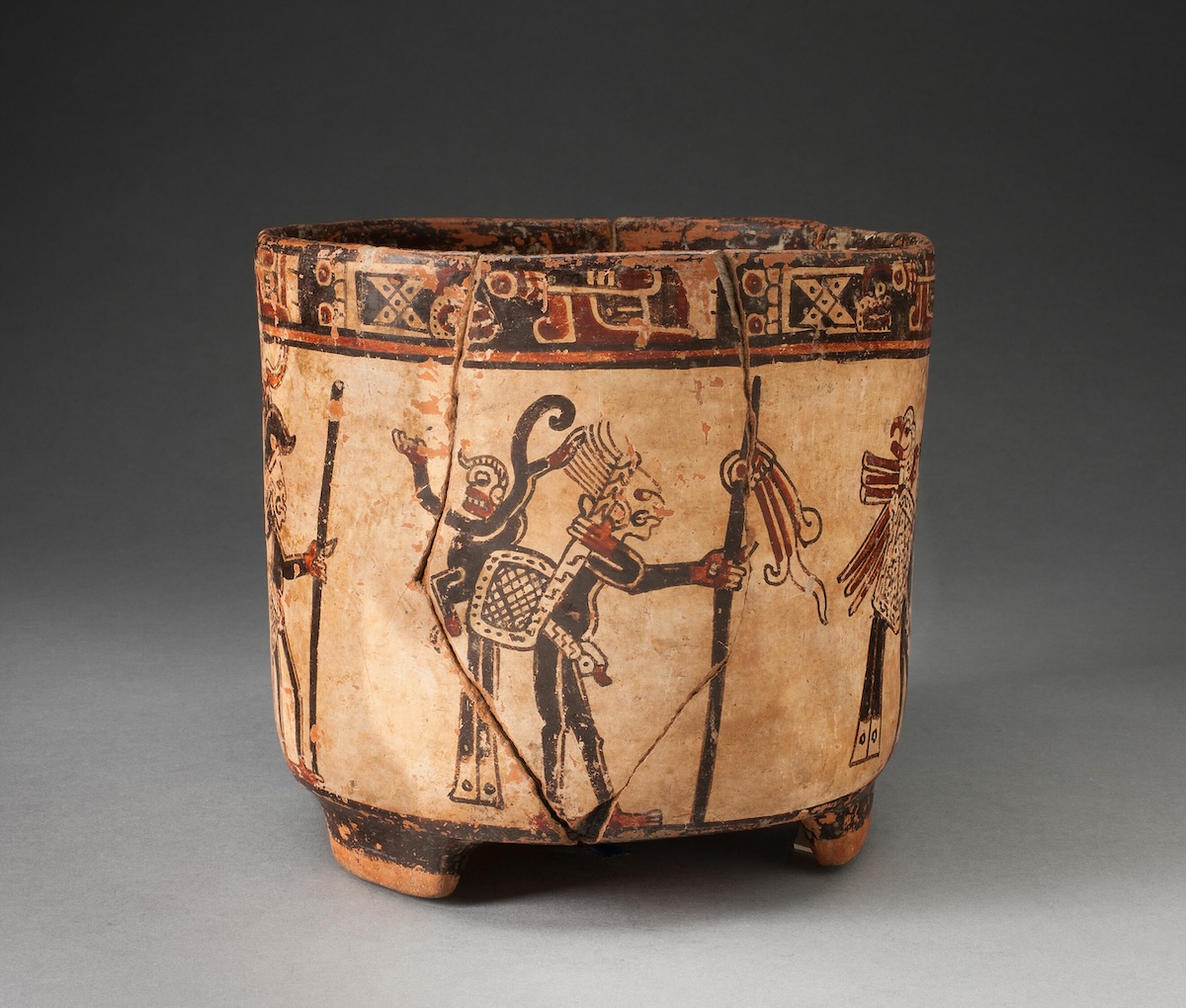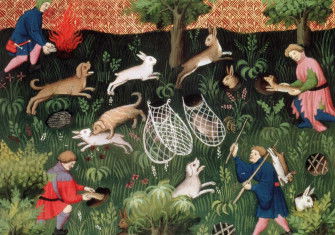‘The Tame and the Wild’ by Marcy Norton review
In The Tame and the Wild: People and Animals after 1492, Marcy Norton shows through Indigenous American practices and beliefs that colonisation was a catastrophe for the natural world.

Sometime in 1543 on the island of Hispaniola, a group of Spanish soldiers searching for runaway slaves came across three seemingly feral pigs in the wilderness. The Spanish slaughtered them without a thought. But then they met an Indigenous man. He was distraught. He had been living in the wild for 12 years, and had trained the pigs to hunt with him: together they used to track down other wild pigs, which the man killed with a spear. He fed the innards of the kill to his pigs, and kept the rest for himself. ‘These pigs have given me life and have maintained me as I maintained them’, he told the soldiers. ‘They were my friends and good company.’
The soldiers later told their story to the conquistador Gonzalo Fernández de Oviedo, author of Historia general y natural de las Indias. It puzzled and fascinated him. Oviedo admired the man’s resourcefulness and skill in taking a hunted animal and turning it into a hunter: his ability as a trainer, ‘teaching [the pigs] in hunting, bringing a trainable relationship to that occupation’, was a mark of his higher human intelligence, Oviedo thought. But he didn’t understand why the man was ‘content living with beasts and being bestial’ – that is, on a kind of parity with the animals. Was the man superior to them, or not?
That clash of ideas is at the heart of The Tame and the Wild, Marcy Norton’s ambitious and absorbing exploration of Indigenous American beliefs and practices with regard to animal life before European – here exclusively Spanish – colonisation. (Norton confines her discussion to the peoples of Greater Amazonia and Mesoamerica.) In Europe, she argues, human relationships with animals were governed by the scriptural authority for human dominion over the natural world. There were ‘vassal animals’ – dogs, horses and so on – who undertook labour and who were often individuated, and ‘livestock animals’, who were viewed to a greater or lesser degree as objects. The latter were eaten; the former were not.
In Indigenous American cultures, however, Norton sees an ‘ethos of intersubjectivity and reciprocity’ which understood humans and animals to be fundamentally alike, both being part of a wider belief system which emphasised cyclical processes in which life and death were inextricably linked. ‘Personhood or subjectivity is far from an exclusive property of humans’, she writes of this ethos, ‘but is characteristic of … all phenomena.’
These cultures did not draw distinctions between human and non-human, then, as the Spanish did, but between the wild and the tamed. The wild were hunted – Norton prefers the word predation – and the tamed became in some sense part of the community, a process for which she uses the anthropological term familiarisation. ‘The essence of livestock husbandry – one eats the animal one feeds – was anathema’, she writes. Although perhaps in some senses analogous to what we would understand as pets, Norton uses the Indigenous Kalinago word iegue for these tamed animals to emphasise how different both the relationship and the process was: pets are born into domesticated captivity, familiarisation is ‘how one turns a wild animal into kin’.
There is not a little of the idyll in some of this: ‘the reasons for entering into relationships with iegue were bestowing care and experiencing love’, she writes. Here and there we glimpse more uncomfortable realities. Baby monkeys were best caught by finding a mother with her infants clinging to her back and killing her with poison arrows. Little boys, as noted by the Italian Jesuit Felipe Gilij, ‘happily pass the days, killing little birds in the scrub and the forest’. And Norton’s admiration for an ethos which makes no ethical distinction between human and non-human animals does raise challenges, particularly with regard to ritual slaughter. ‘What made such killing tenable was the principle of reciprocity’, Norton writes of human and other sacrificial practices. But what did those who were thus sacrificed think? In Aztec Tlatelolco, she notes, a human captive being led to his death sometimes ‘lost his strength’ and fainted, or resisted by ‘continually throwing himself on the ground’. Post-conquest, one of the reasons human sacrifice died out was that it was ‘difficult to conceal the ritual killing of people because they often left behind distraught family who did not hesitate to denounce the killers to authorities’.
This kind of evidence suggests that at least some Indigenous people within these societies did not find such killing tenable at all – which surely complicates the organisational categories and moral relationships which Norton discerns. Moreover, the over-arching opposition on which Norton builds her argument is between European and Indigenous American ideas of personhood, with large-scale livestock management and the objectification of animals which it implies being characteristic of the former. It is a shame, therefore, that she doesn’t explore in more detail Indigenous American societies, such as the Incas, which did herd livestock and indeed eat the animals they raised.
Caveats aside, The Tame and the Wild is a capacious and richly rewarding book, which includes a range of subsidiary arguments, among them the idea that we should consider the introduction of intensive livestock farming to the Americas as a form of extractive colonialism because of its impact on Indigenous labour and land use. Two chapters at the end sketch out the influence of Indigenous ideas about human-animal relations on the adoption of pets in the industrial world and on the emergence of empirical projects to categorise natural history in the modern period. The latter of these, in particular, merits expansion.
The Tame and the Wild is also, in its own way, an attempt to categorise the animal world – in this instance that of the human animal. But while Norton creates many distinctions and boundaries in her arguments, reality is not so tameable as all that, and wildness – difference, difficulty, the unknowable – spills out everywhere, riotous and unconfined.
-
The Tame and the Wild: People and Animals after 1492
Marcy Norton
Harvard University Press, 448pp, £31.95
Buy from bookshop.org (affiliate link)
Mathew Lyons writes the ‘Months Past’ column for History Today.






